Wedding Seating Plan Tips: Create the Perfect Arrangement for Your Big Day
Planning a wedding is a big task, and one of the most important parts is creating a seating chart. This ensures that all your guests are comfortable and can enjoy the celebration. With a little planning, you can make sure everyone, from close family to distant relatives, feels included and valued.
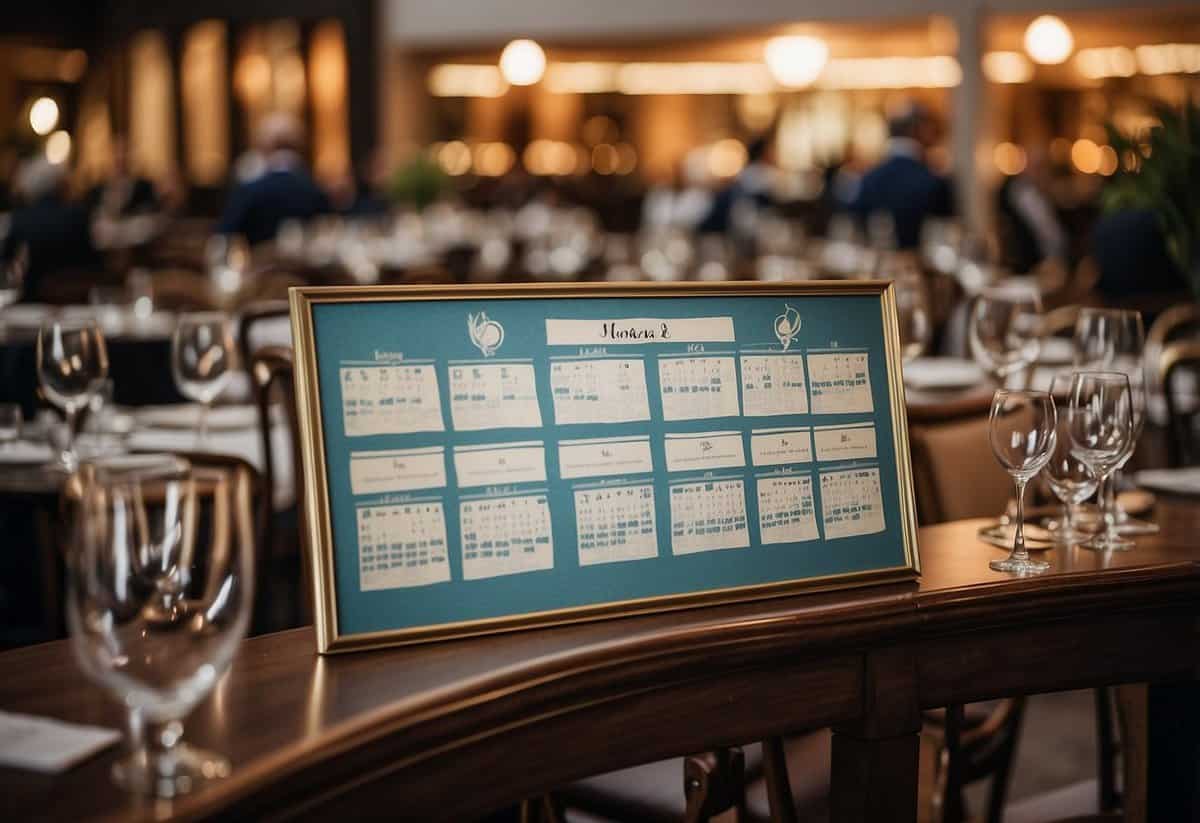
How do you create a seating plan that brings harmony and fun to your special day? Having a thoughtful seating arrangement can make a big difference in the flow of your wedding reception. Whether it’s arranging people by common interests or keeping certain family dynamics in mind, a good seating plan helps set the stage for a memorable event.
1) Assigned Seats for VIP Guests
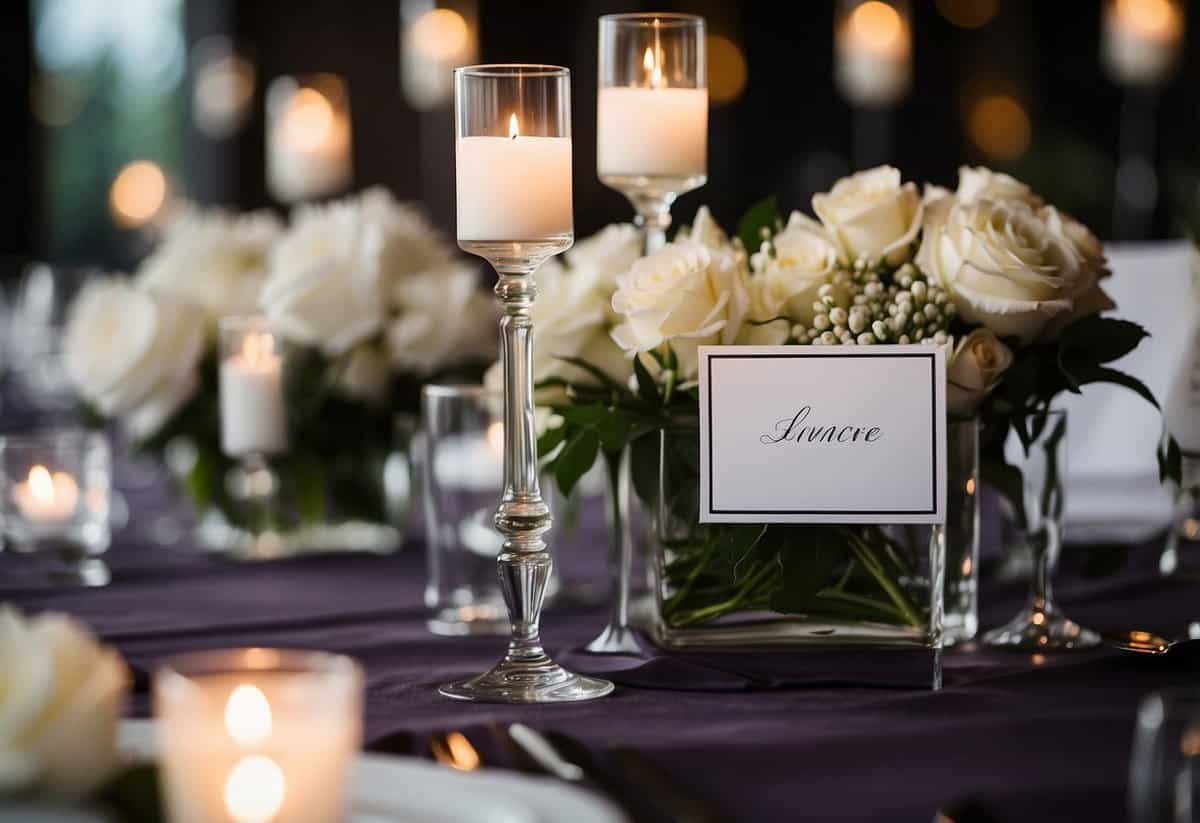
Assigning seats for VIP guests ensures that they feel special and valued at your wedding. These guests usually include close family members, the wedding party, and any other significant people in your life.
Place VIPs near the front to give them the best view of the ceremony and reception activities. This proximity allows them to be a part of key moments and easily interact with you.
Make sure the seating labels are clear and easy to find. Using large, eye-catching signs or an organized seating chart at the entrance helps guests find their places without confusion.
2) Create a Floor Plan First
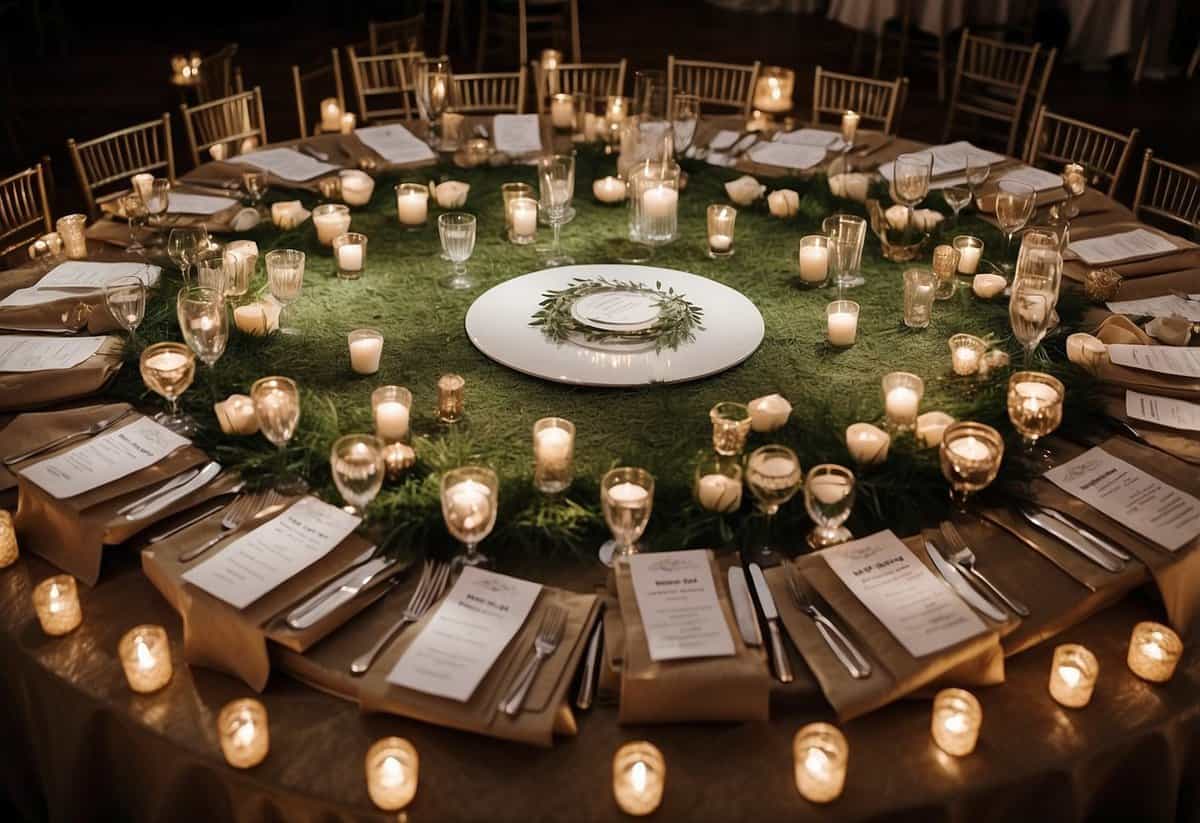
Before you start placing guests, map out your venue’s floor plan. This helps you see where tables, the dance floor, and other key spots will go.
Work with your venue to determine the best layout. Consider where to place the DJ, food stations, and any other important areas.
Using an online tool can make this task easier. Digital floor plans let you easily adjust and share layouts. This is handy if you need to make changes later.
3) Mix Family and Friends
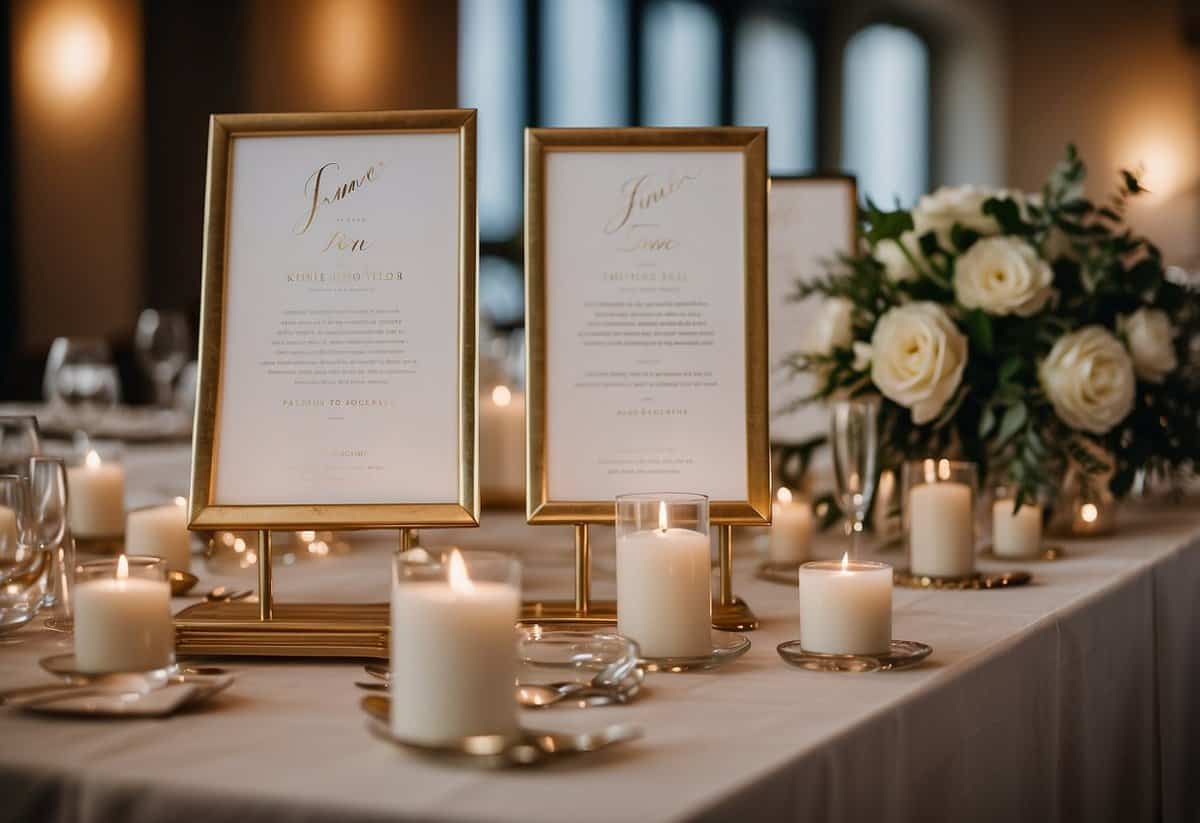
Mixing family and friends at your wedding can create a more lively atmosphere. Sit your guests in a way that encourages conversations and connections. This way, everyone has a great time and the party feels more inclusive.
You might place a few friends at tables with family members. This helps break the ice and blends different groups together. It can also prevent any one table from feeling too isolated.
Make sure to balance the tables well. You don’t want too many people who don’t know each other at any table. Aim for a good mix that promotes chatting and laughter.
Remember to consider personalities. Combining outgoing friends with quieter family members can help draw everyone into the fun. This way, your wedding reception feels more like a big, happy gathering.
4) Name the Tables Creatively
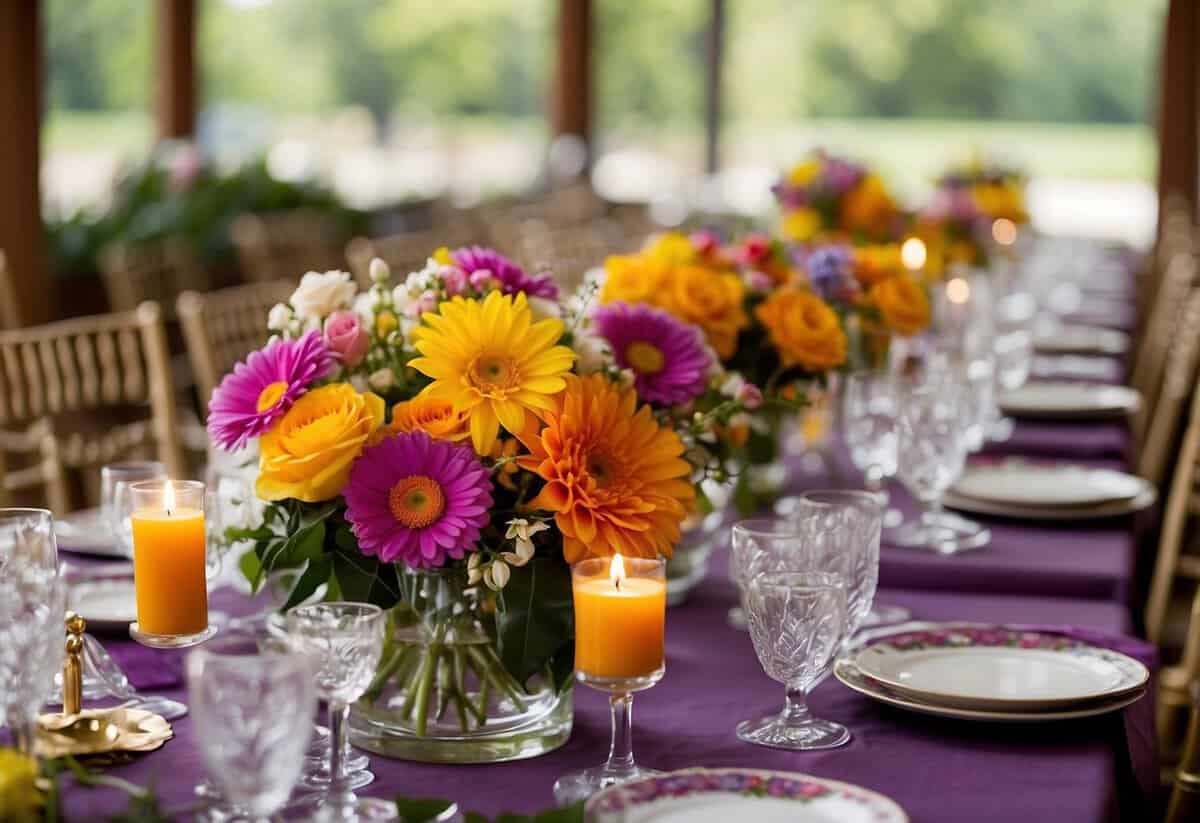
Give each table a unique name that reflects something special. You can name them after places you’ve traveled together. This adds a personal touch and makes finding their seats more fun for your guests.
Another idea is to use your favorite books or movies. Guests will enjoy seeing familiar titles and it can spark conversations.
You might also consider using colors, especially if your wedding has a particular color scheme. For example, “Ruby Red,” “Sapphire Blue,” or “Emerald Green.”
Some couples like to name tables after their favorite songs or bands. This can be especially fun for music lovers and adds a personal touch to your wedding.
5) Consider the Venue Layout
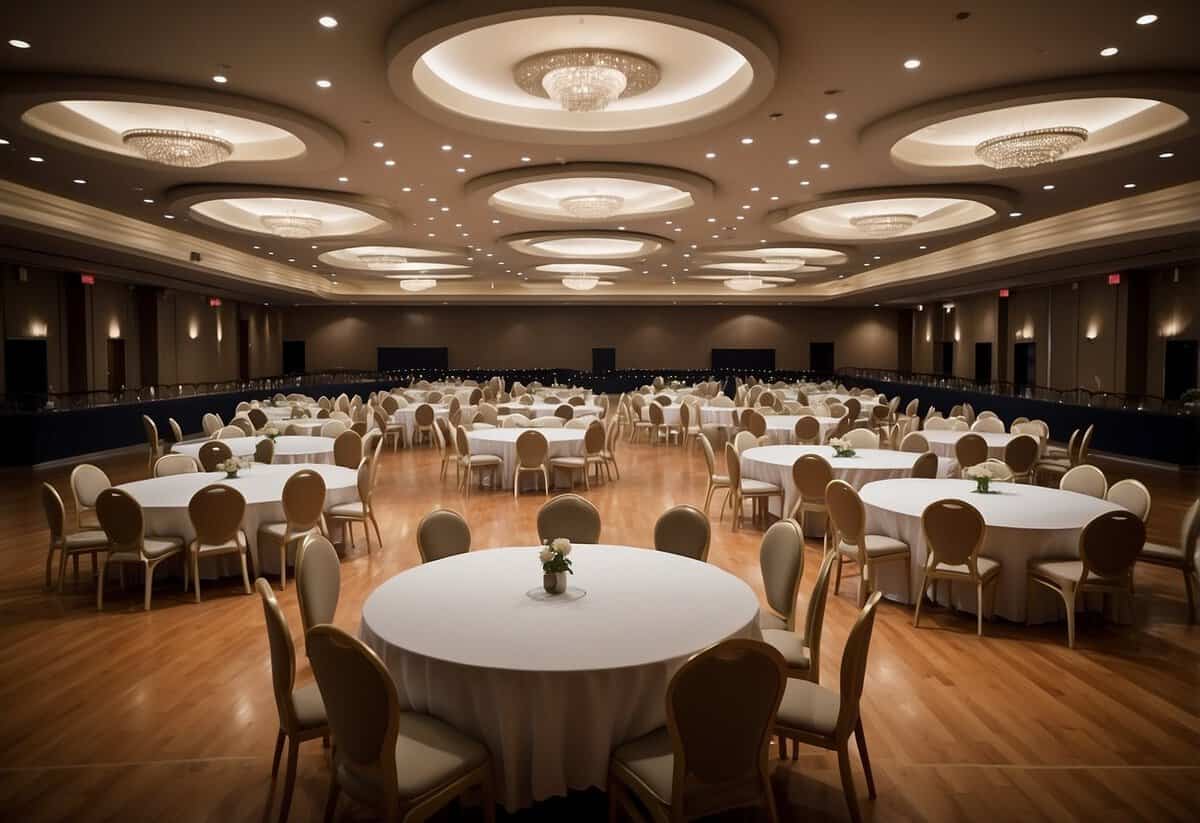
Your wedding venue layout plays a big role in your seating plan. First, get a floor plan of the venue to visualize the space. This helps you place tables in a way that makes sense for the room’s shape and size.
Think about where key areas like the dance floor, exits, and restrooms are located. You want your guests to have easy access to these spots.
Make sure there are clear paths between tables so guests can move around comfortably. Avoid placing tables too close together to prevent crowding.
If possible, visit the venue and walk through the space. This can give you a better feel for how your seating plan will work in real life.
6) Have a Kids Table
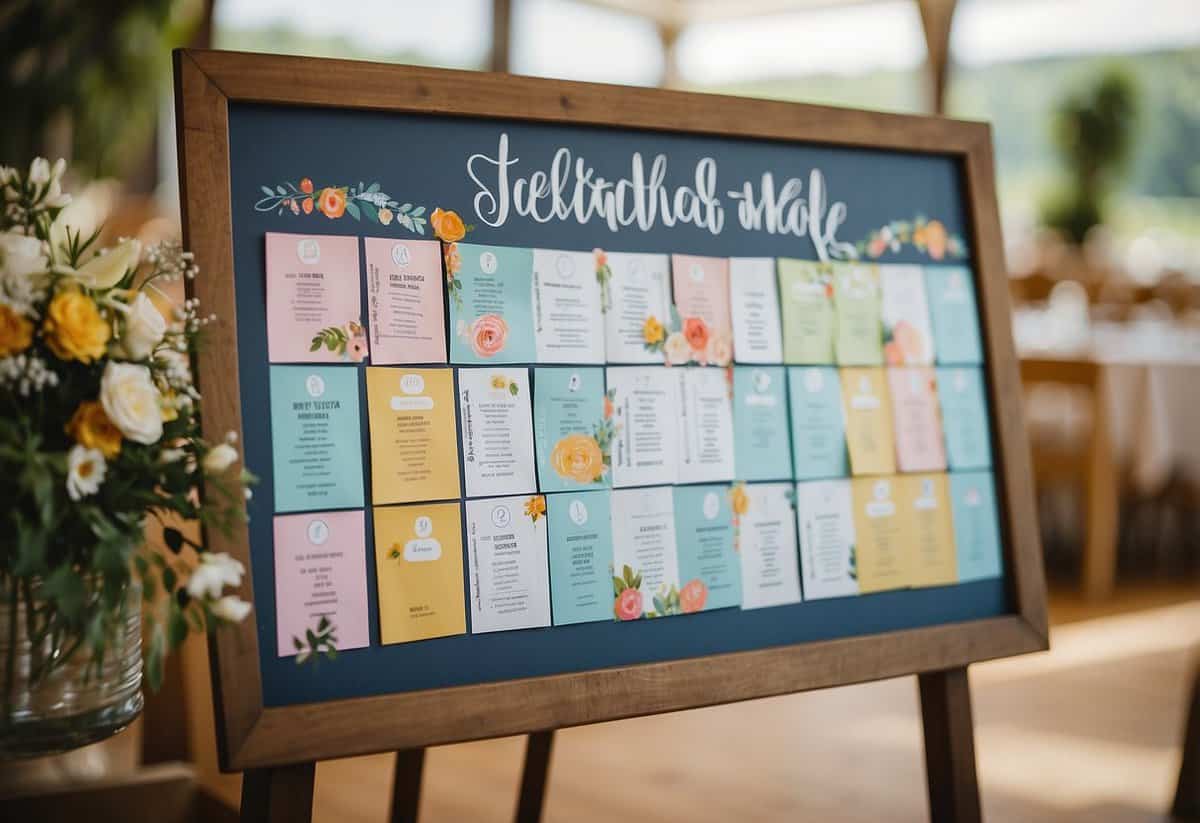
Having a kids table at your wedding can be a great idea. It allows kids to have fun and be themselves without bothering the adults. You can set up a table with kid-friendly activities like coloring books, puzzles, and games.
Adding small treats or snacks can also keep them entertained. Think about including child-friendly favors that they can take home. This keeps them occupied and happy during the reception.
Make sure the table is close enough so parents can still keep an eye on their children. It helps everyone enjoy the celebration. Ensure the kids table is safe and comfortable, with chairs that fit their size.
7) Use Escort Cards
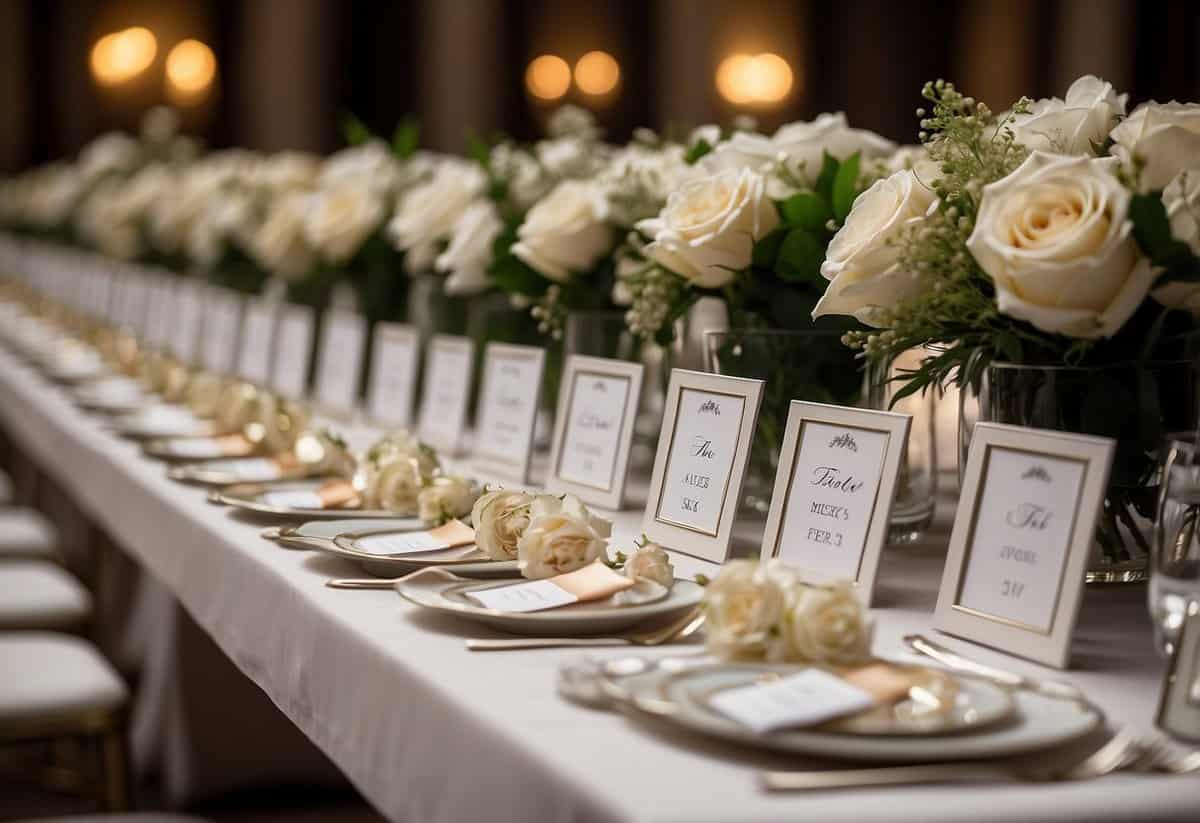
Escort cards are a great way to keep your wedding organized and stylish. These small cards guide your guests to their assigned tables without confusion.
Place the escort cards near the entrance to your reception. Ensure they are easy to read and find. This helps guests smoothly transition to their tables.
You can get creative with your escort cards. Consider using items that double as keepsakes, like custom coasters or handmade ceramic mugs. Personal touches can make your wedding even more memorable.
8) Plan for Plus Ones
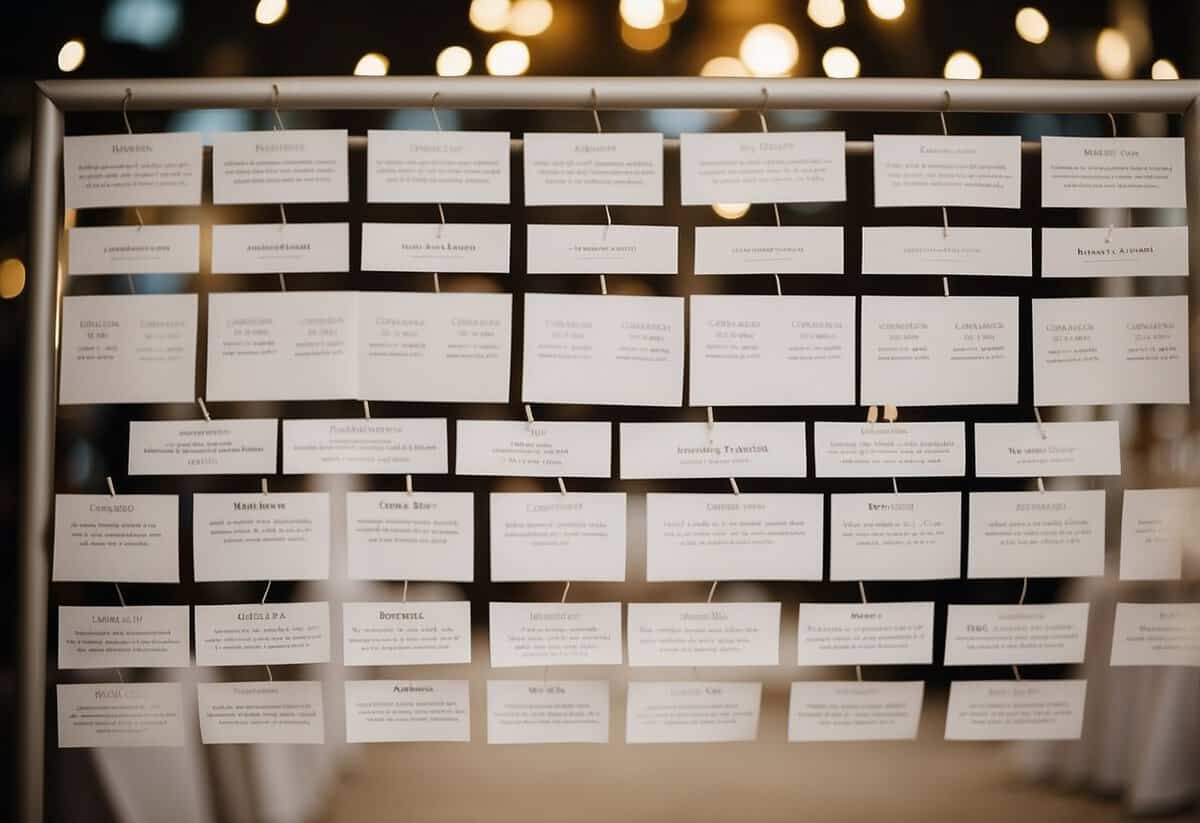
When planning your seating chart, consider your plus-ones. Make sure each guest with a plus-one has room for their guest at the table.
It’s always a good idea to seat them together with mutual friends. This can help everyone feel more comfortable and welcome.
Be mindful of your budget and venue size. Allowing plus-ones can increase your guest list, so plan ahead to make sure there’s enough space for everyone.
9) Avoid Grouping All Singles Together
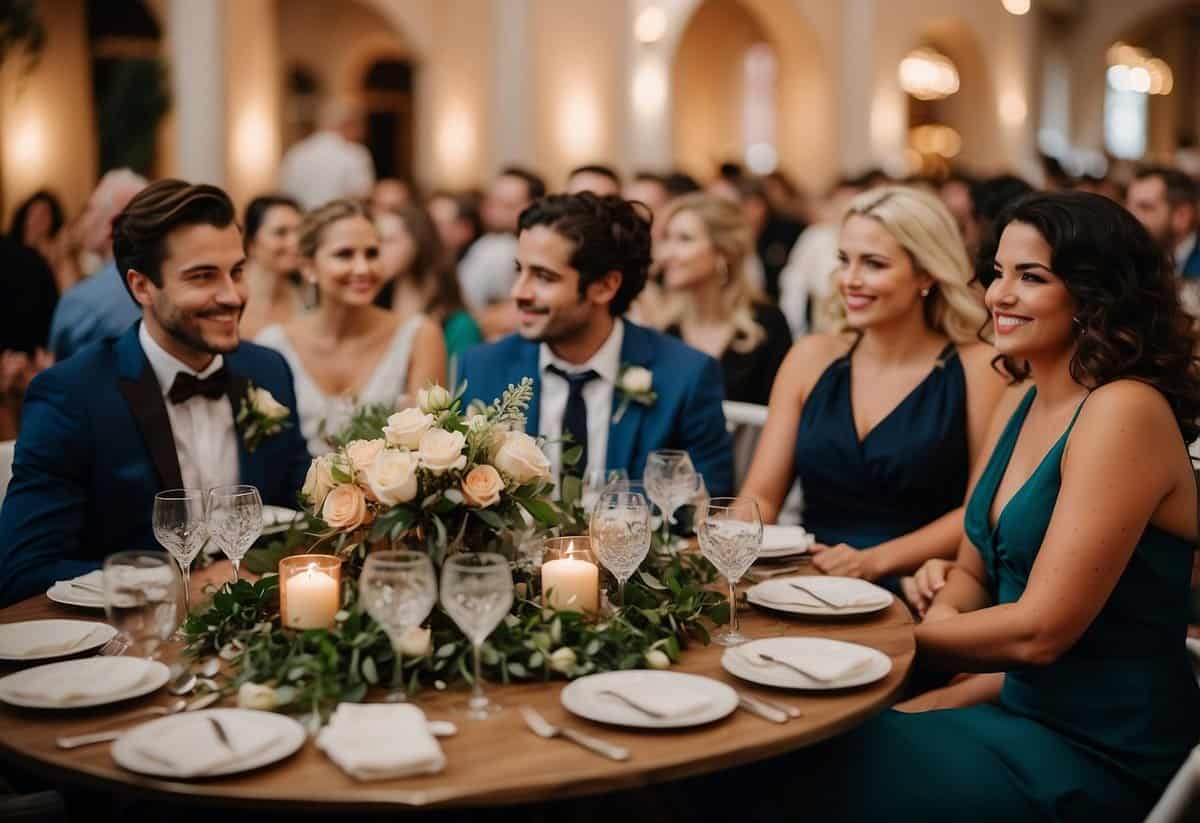
It’s tempting to seat all your single friends at one table, thinking they might make new connections. But this can make them feel awkward.
Instead, mix singles with couples and other friends. This way, everyone enjoys more relaxed and diverse conversations.
When planning, consider people’s interests and personalities. Seat those with common hobbies together. Your single guests will feel more comfortable and have a better time.
10) Ask for Dietary Restrictions
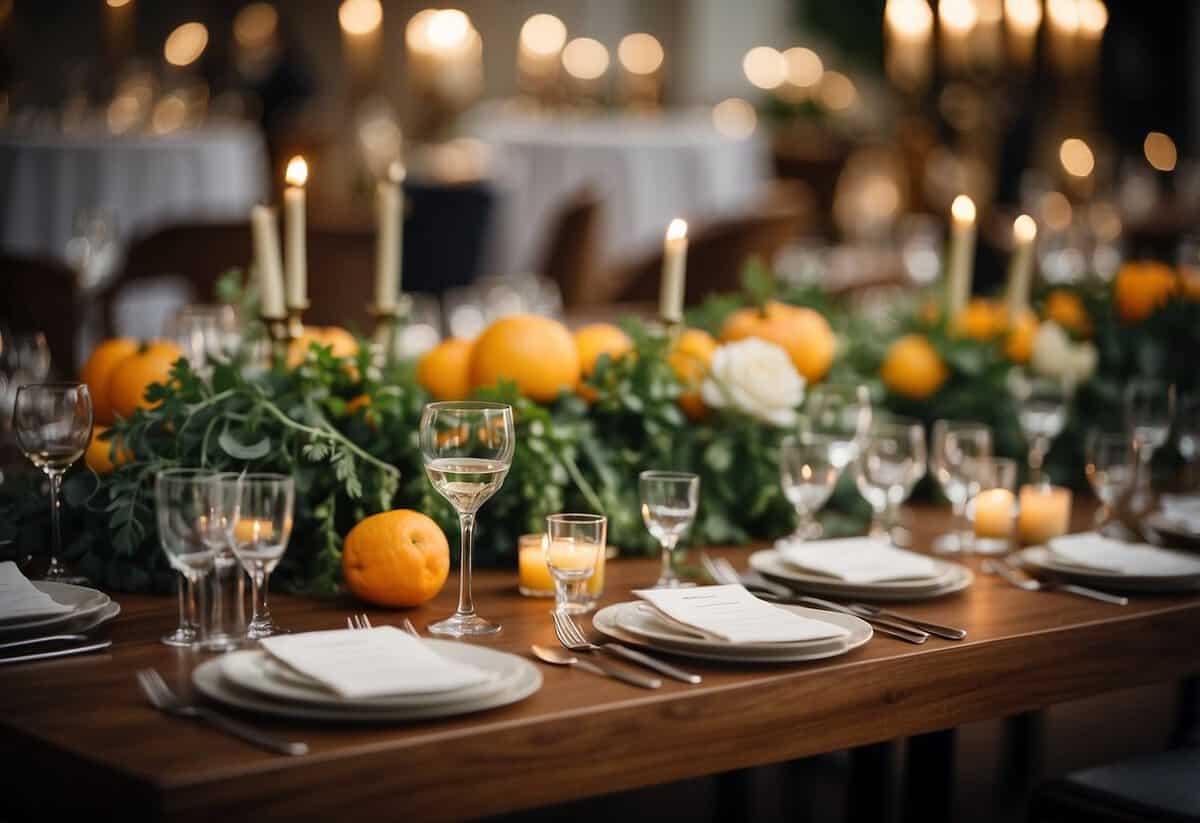
When planning your wedding seating, it’s important to consider your guests’ dietary needs.
Include a section in your invitation for guests to specify any allergies or dietary restrictions.
This helps you make informed decisions for the menu and seating arrangements.
Catering should be able to handle special requests. Just make sure they are aware well in advance.
Providing a copy of the menu ahead of time can also be helpful.
Guests can identify any issues and communicate them to you early on.
Understanding Your Guest List
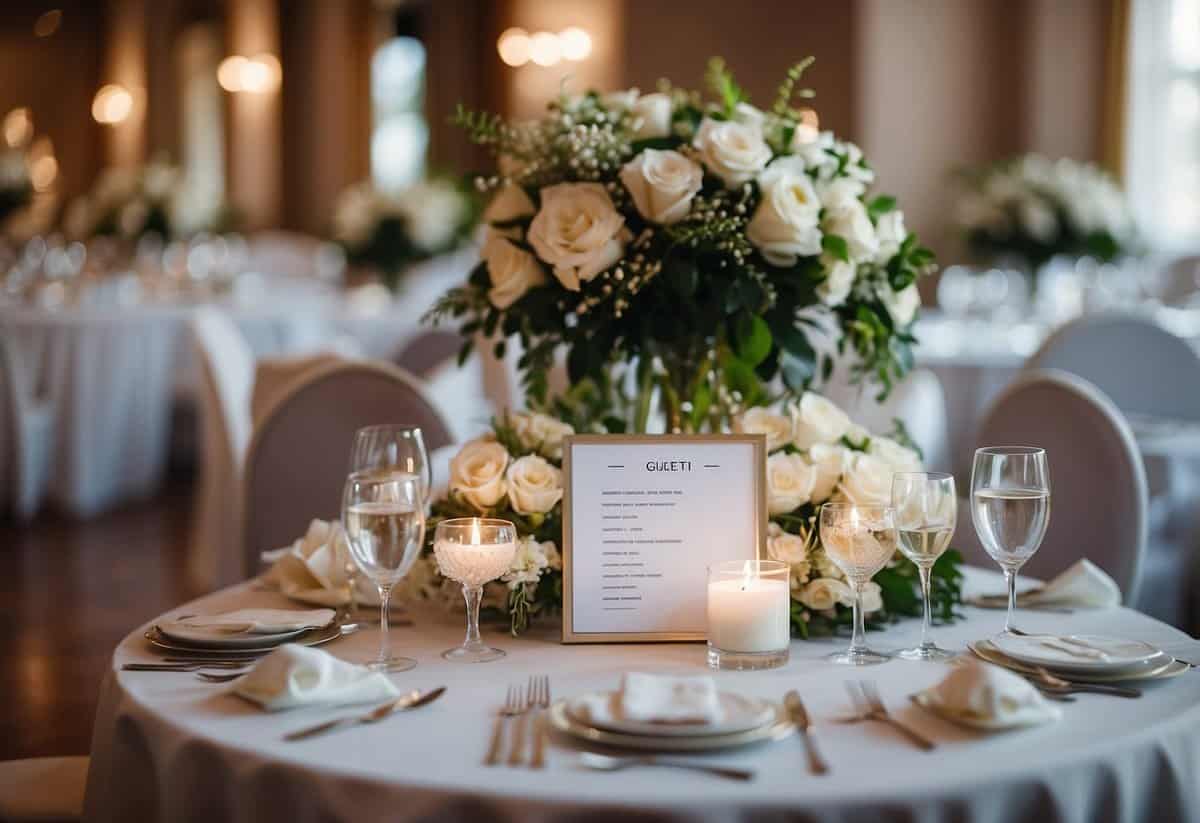
When planning your wedding seating chart, it’s crucial to know who your guests are and how they interact. This will help you create a comfortable and enjoyable experience for everyone.
Gather RSVPs Early
The first step in understanding your guest list is to get accurate RSVPs as early as possible. Send out invitations well ahead of time, giving your guests at least six to eight weeks to respond. This allows for planning without last-minute surprises.
Sending reminders a couple of weeks before the RSVP deadline can help you catch any stragglers. By gathering RSVPs early, you’ll have a clear idea of how many people will attend, making it easier to plan seating arrangements accurately.
Consider Guest Relationships
Knowing the relationships between your guests is key to a successful seating chart. Start by identifying groups that know each other well, like family members, close friends, or work colleagues. Seating people who are familiar with each other can create a more relaxed atmosphere.
But don’t stop there. Think about any potential conflicts or uncomfortable dynamics. If you know two guests have had past disagreements, seating them far apart may be wise. Conversely, seating guests with shared interests together can stimulate conversation and enhance their experience.
By considering these relationships, you can help ensure that everyone enjoys your special day.
Types of Seating Arrangements
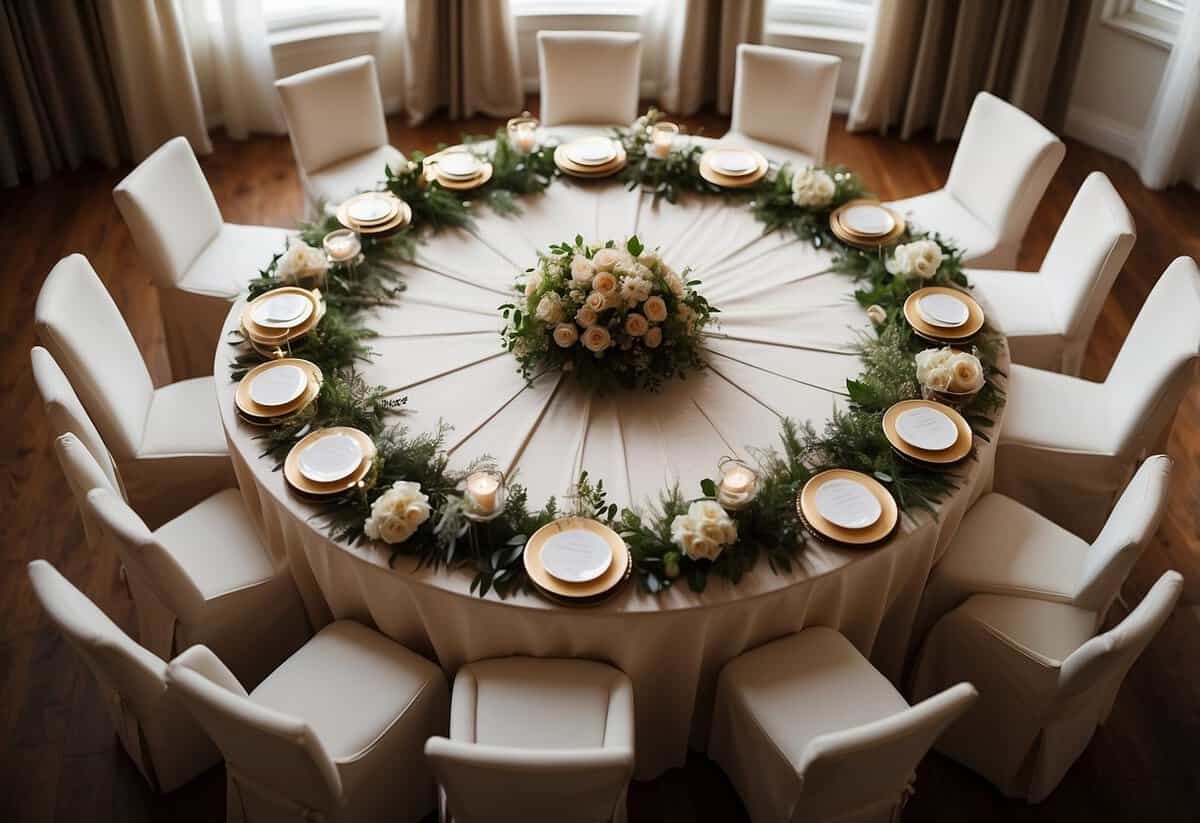
Choosing the right seating arrangement for your wedding can set the tone and impact how your guests interact. Different seating styles create different atmospheres and experiences.
Traditional Seating
Round tables are a popular choice for weddings. They offer a timeless look and make it easy for guests to chat with each other. Typically, a 60-inch round table seats eight people, while a 72-inch table can seat ten. Position these tables evenly throughout your space for a balanced look.
Banquet seating is classic and perfect for a formal feel. Long rectangular tables can seat many guests and create an elegant dining experience. This style fosters a communal vibe since people sit closer to each other.
Sweetheart tables are specially for the bride and groom. This small table for two allows the couple to share an intimate moment while being the focus of attention. Place it in a central spot for the best view of the room and the dance floor.
Mix and Match
Combining round and rectangular tables can create a dynamic and visually interesting setup. Mix sizes and shapes to suit your space and guest list. This hybrid approach allows for creative flexibility and can accommodate different guest group sizes.
For a more modern feel, lounge areas with sofas and coffee tables can be included. This casual setup is great for encouraging mingling and can be placed near the dance floor or bar area.
Family-style tables are another option. These long tables promote sharing and conversation as guests pass dishes around. This arrangement works well for smaller, intimate weddings and fosters a warm, communal atmosphere.
By thoughtfully choosing your seating arrangements, you can enhance the overall ambiance of your wedding and ensure your guests have a memorable experience.
Tips for a Smooth Seating Plan
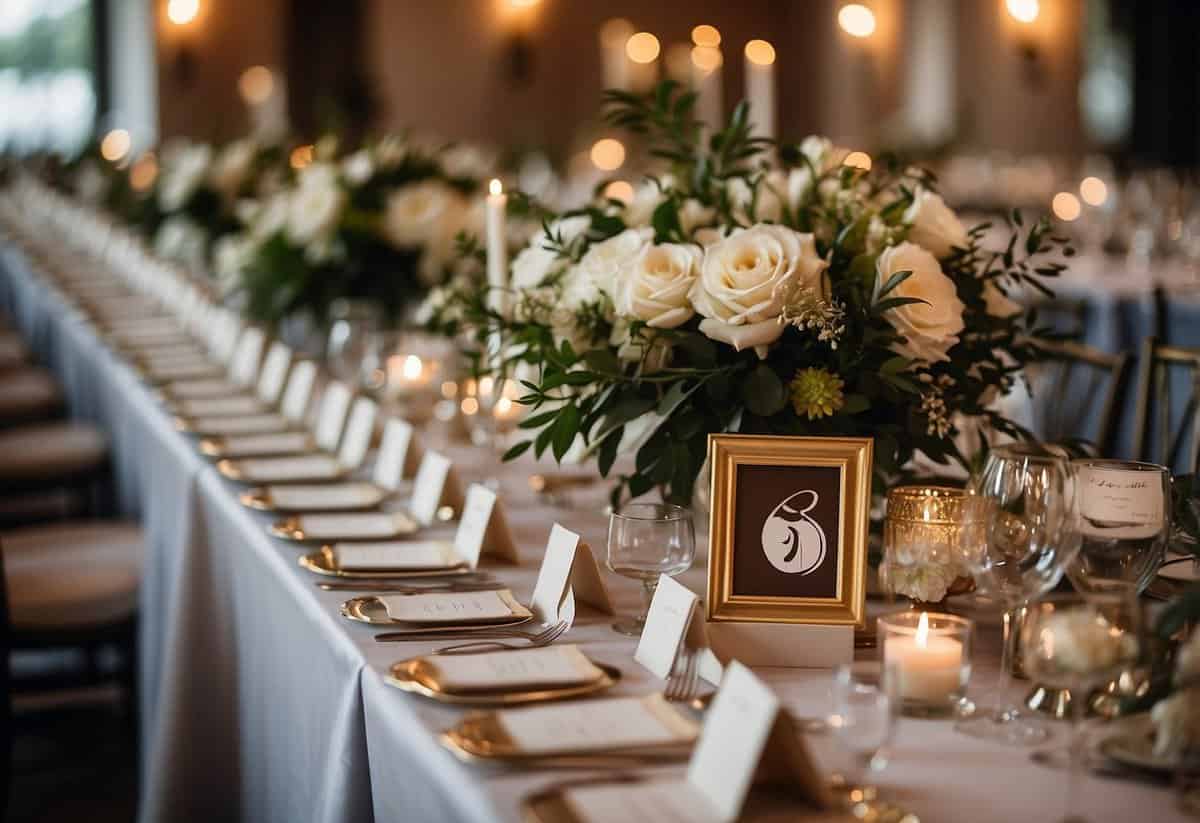
Creating a smooth seating plan involves using effective tools and considering the needs of all guests. This ensures everyone has a pleasant experience and helps the event run seamlessly.
Use a Seating Chart Tool
Using a seating chart tool can save you time and reduce stress. These tools are easy to find online and often offer drag-and-drop features.
Some tools let you import your guest list directly, making it easier to assign seats. You can also visualize the layout better, adjusting tables and seating as needed.
One useful feature is the ability to group guests by relationship or category. For instance, you can label tables for friends, family, or work colleagues. This helps you keep track of where everyone is sitting.
Additionally, some tools offer options for adding notes about guests. This can be handy for remembering special requests or last-minute changes.
Account for Special Needs
It’s important to consider guests with special needs while planning your seating arrangement. This ensures everyone feels comfortable and included.
Start by identifying guests who may require special accommodations, such as those with mobility issues, dietary restrictions, or small children. You can then make specific arrangements to meet their needs.
If a guest uses a wheelchair, make sure they have easy access to their table and space to maneuver. Guests with dietary needs should be seated where servers can easily locate them for special meal requirements.
Remember to also think about older guests or those who might need to be closer to restrooms or exits. Small considerations like these can make a big difference in your guests’ comfort and enjoyment.







